Exploring the Historic Links of Early Hip-Hop and Gang Culture
by Davey D
 According to the popular narrative, hip-hop grew out of gang culture in the South Bronx.
According to the popular narrative, hip-hop grew out of gang culture in the South Bronx.
One of its pioneers – gang leader Afrika Bambaataa, who had turned his life around – used hip-hop to get people out of gangs and into something more positive.
Bambaataa had led a division of the Black Spades in the Bronx River Houses project before deciding to take his followers in a new direction, first by forming “the Organization“.
” Later, after learning about the Zulus of South Africa, who fought colonial rule, Bambaataa transformed the Organization into the Mighty Zulu Nation, now known as the Universal Zulu Nation.
It remains not only the oldest but the largest hip-hop organization, with chapters on every continent and tens of thousands of members.
Now on many levels that very familiar narrative is true. However, it’s so much more complicated. Most people when they hear this tend to gloss over the full significance of the gangs. Very few of us Hip Hop aficionados have rarely taken time to see how Bambaataa’s actions came about.
We don’t ask how gang culture played a role in birthing Hip Hop? Did Bambaataa bring about this turn around as a part of some government program or did he do this on his own? Was Bambaataa the only gang leader striving for positive change? Who were the other gangs and gang leaders alongside and before Bambaataa? Were the gangs in the 1970s the same as the gangs we read and hear about today in the news which are often depicted as violent prone and conduits for drugs, murder and mayhem?
Nobody will deny that much of what is reported is not true in particular instances but there is another side to the story.
 Many of us caught a glimpse of that ‘other story’ when we read Bay Area author Jeff Chang‘s award winning book ‘Can’t Stop Won’t Stop A History of the Hip Hop Generation‘.
Many of us caught a glimpse of that ‘other story’ when we read Bay Area author Jeff Chang‘s award winning book ‘Can’t Stop Won’t Stop A History of the Hip Hop Generation‘.
Here Chang loaned some keen insight into the Ghetto Brothers which was major Bronx gang that preceded the birth of Hip Hop.
Chang’s chronicling of the Ghetto Brothers brought to light some very important facts that are often overlooked including how highly organized the early Bronx gangs were and how they were highly influenced and politicized by the Black Panther Party and the Young Lords.
War councils, peace treaties and the forming alliances were highly structured with very few things done haphazardly. Many of the gangs were about protecting the community from the police, marauding racist white gangs that resented Blacks and Puerto Ricans moving into their rapidly integrating neighborhoods, drug addicts and drug dealers.
The most important facet Chang brought to life is the 1971 Gang Truce which was designed to unite all of the city’s gangs.
This historic gang truce was said to be loosely depicted in the opening scenes of the cult movie classic ‘Warriors‘ with the movie’s large dominant gang ‘The Rifts being a combination of the real life Ghetto Brothers and the Black Spades-New York’s largest gang.
This past month (June 28 2008) at the Mitchell Housing projects in New York’s infamous South Bronx, those of us who are dedicated to unearthing and preserving Hip Hop history and culture were treated to a landmark moment. Former gang members came from all over the city and throughout the country to commemorate the 40th anniversary of the Black Spades. It was an incredible sight to behold and gave folks an opportunity to soak up history that has long been hidden.
To start, the Spades came together because over the past few years many of the former members either through Zulu Nation or within their own organizations have been working to bring about peace and provide guidance to young people who have become attracted to New York’s new gang problem which consist of many west coast and Chicago gangs like the Bloods, Crips, MS13, Latin Kings and others.
Hip Hop dance pioneer Popmaster Fabel and a member of the East Harlem street organization the Savage Samuri, pointed out the irony of how Hip Hop provided a cultural imperative through traditional dance, music and artistic traditions helped move people away from the destructive aspects of gang life. Today through corporate co-option of the culture which manifests itself in the continuous highlighting of death instead of life, so much of commercial Hip Hop has now become a draw for youngsters to get involved with gangs.

Fabel who is putting the finishing touches of his ground breaking film ‘Apache Line From Gangs to Hip Hop‘ took time to explain in great detail why it was important to understand the inner workings of the street organizations that gave birth to Hip Hop. Fabel doesn’t use the word gang because he sees it as a media driven term that was attached to young Black and Latino youths who saw the older leadership in their community came decimated in the 1970s through the FBI’s Cointel-pro program, the Vietnam War, and War on Youth which later morphed into the War on Drugs.
Fabel painstaking details in his film how in the backdrop of that cultural and social devastation young people at that time attempted to find their voice and identity and a sense of family within the early Bronx street organizations.
Fabel then introduced me to Karate Charlie the former president of the Ghetto Brothers and prominently featured in Fabel’s film. Charlie who looks like someone in his 60s talked about how he was a former marine who went AWOL when he saw how the government had destroyed the Black Panthers and Young Lords and other leaders in the community. He talked about how it was disturbing to him to be fighting a war overseas when there was a war at home being waged on Black and Brown communities.
“I took off my government uniform and put on the uniform of the Ghetto Brothers and went about protecting our community”, Karate Charlie said.
He then talked emphatically about how he and others would teach everyone martial arts and to speak Spanish. He talked about how they fought to make sure heroin which was flooding the community much like crack did in the 80s would be kept out along with the dealers and addicts.
He also talked about how the Ghetto Brothers would patrol the subways and protect people long before Curtis Sliwa and the Guardian Angels came along.
Karate Charlie of the Ghetto Brothers has just written a book called ‘I Smile to Keep from Crying‘. He ended by talking about how it was important that they tell their own stories and not have outsiders come along and exploit them and their message. Many of the Spades were guarded and wanted to make sure that the message of the day was unity and changing lives, not glamorizing death and mayhem.
Charlie’s story were reiterated throughout the day by other gang members who talked about how they saw themselves as children to the Panthers and Young Lords who really wanted to make a change and found themselves dealing with overwhelming forces outside their control. On the stage alongside the Spade pictures and memorabilia were old flyers of the Black Panthers and Young Lords.
As I listened to these stories I couldn’t help but draw parallels to what was depicted in the film ‘Bastards of the Party‘ put out by Bone who is a member of the LA Bloods and traced the groups history. His story had some much similarity to what these old Bronx gang members were talking about.
Fabel pointed out how many of the early gangs had a cultural elements that they used to communicate and express themselves. The Ghetto Brothers had a band that actually put out records.

The Black Spades adapted James Brown and changed the lyrics to his song Soul Power to ‘Spade Power‘. We saw that actually demonstrated that afternoon with some of the Spades doing their original dances. As I watched it you could not help note that long before the infamous Crip walk and Blood dances that are ritualistically done by gangs today and glorified by rappers in their videos, the street tribes before them had their own dances. As Fabel pointed out it what we were seeing was an example of that cultural imperative. He too later joined the circle and danced and showed off the moves that he had picked up from the generation before him.
Perhaps the most incredible moment of the afternoon came when Karate Charlie came together and hooked up with Bam Bam who was an original leader of the Black Spades 1st division and the person who gave Afrika Bambaataa permission to use the name Bam. The pair had not seen each other in close to 40 years when they came together and attempted to put together the 1971 Gang Truce. Bam spoke passionately about what it meant when they all came together to unify. He talked about how the Spades protected the community. He then addressed the younger members and told them its easy to take a life, but if one is really tough try saving one. If you’re really tough try living instead of dying. Words cannot describe what was taking place.
Fabel reiterated that Hip Hop came out of the government’s attempt to crush leadership in our communities. What he talked about that afternoon clearly underscored what we heard from Spade members which is-Unity amongst disenfranchised and marginalized communities was and continues to be threatening to many who wish to keep the status quo.
But at long last many of these stories are finally coming to light in the movie Apache Line.
Fabel did his movie after coming face to face with a young Blood gang member in his class where he teaches. He saw this young man who was on a path to self destruction and wanted to help him and others like him out. Hence he spent the last few years meticulously documenting the culture and people who came before him who were in gangs. Fabel has been troubled by the Hollywoodizing of inner city gang culture which has stripped away the deeper meanings and messages. His film will force folks to go in a new direction.
Another highlight of the afternoon was talking with original Zulu King and B-Boy Charlie Rock who was once a member of Black Spades 22cd division. He talked about the early gangs like the Black Spades evolved into the Zulu Nation and later Hip Hop’s early crews. In our interview he identified many of the early Hip Hop Crews and talked about the gangs that they came from or were most likely affiliated with…
Rock also talked about how the Spades and other large gangs came under-fire from the police with some of the members assassinated. He talked about the police killings of members Wildman, Soulski and Meathead Ron.
Rock saw those murderers as part and parcel to the attacks and killings that were simultaneously happening to Panthers, Young Lords and other Black Liberation organizations. He talked about how the police hung him over a roof top and threatened to kill him. He attributed these attacks to the fact that the Black Spades were willing to confront the police and that the gang was so large and organized. They were a threat and he felt there was an attempt to cripple them by killing off members.
Rock reminded us that the Black Spades and other groups were not alone in the Bronx. There was a litany of white gangs who had proceeded them and in fact used to start trouble with groups like the Spades until they began dominating. In our interview Charlie Rock talks about white gangs like the Golden Guineas, The Ministers, the White Angels and the White Assassins. He also talked about how the police would sometimes help these white gangs in attacking the Black Spades. Rock’s remarks were deep and reminded me of the stories we heard surrounding the origins of Black gangs in LA and in Chicago. At the center were white gangs and police reigning terror on the community. Rock speaks to this issue in our interview..
Below are some interviews we did during the 40th anniversary gathering of the Black Spades. We caught up with many of the members including original leader Bam Bam who gave Afrika Bambaataa his name. We spoke with Hip Hop legend Popmaster Fabel who is finishing up a documentary on early gang culture called ‘The Apache Line‘. We also hear from Karate Charlie who was the former President of the Ghetto Brothers
http://www.youtube.com/watch?v=2nwsdYU4yKM
We talk with Hip Hop legend Popmaster Fabel who talks to us about the important role early gang culture played in bringing Hip Hop to life. We also talk about how pop culture is exploiting gang life and leading people astray. Fabel explianed that early Hip Hop got people out of the gangs.. Today’s rap music gets people into them..We hear an impassioned Bam Bam, orginal leader of the Black Spades speaking to young gangbangers in New York, Crips, Bloods, Latin Kings etc and explaining the direction they should really be taking.. His words of warning are very powerful…
http://www.youtube.com/watch?v=UGYTeRUWK5k
At the 40th Anniversary of the Black Spades we see Bam Bam re-uniting and talking with Karate Charlie after 40 years. They talk about how the two gangs merged together to stop the Hells Angels from coming into the Bronx and stepping to another gang….We chop it up with Popmaster Fabel about his new documentary The Apache Line from gangs to Hip Hop.. We also talk to him about the current move to try and pit Black against Brown.. Fabel gives a history of why that happens and talks about how early Black and Brown gangs came together.We also speak with Karate Charlie who is featured in Fabel’s documentary about the legacy of the Ghetto Brothers. He talks about how the Black Spades the Ghetto Brothers united and became a family. He also talked about how they protected the community against the police..
http://www.youtube.com/watch?v=0ufPt8g617I
We caught up with original B-Boy and Zulu Charlie Rock who hails from the 22cd division of the Black Spades up on Gun Hill road in the Bronx.. He talks about how the Black Spades evolved and became the Zulu Nation..He talks about Disco King Mario and the founding Spade chapters at Bronxdale Housing project which was known as Chuck City…He also talks about a segregated New York, the white gangs and corrupt police that waged war on the Black Spades.
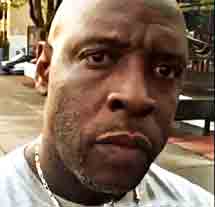


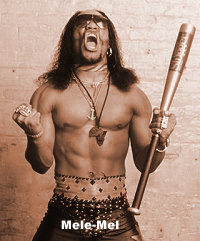


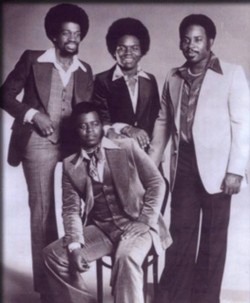
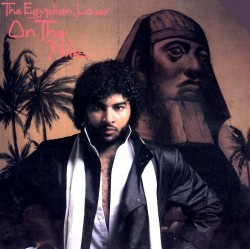

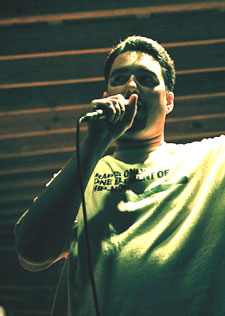


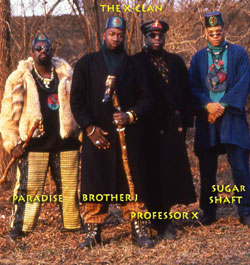
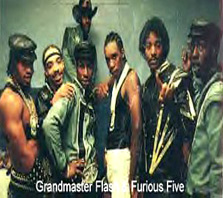







 Today just getting word that one of our Hip Hop pioneers has passed. As I started writing this we’re still trying to officially confirm, but according to what DJ Premier twitted earlier Mr Magic who was best known as being among the first to have a Hip Hop show on a major radio station has passed. Still trying to process all this, because we’ve lost so many people this year. It was just a week or so ago we were mourning the passing of DJ Roc Raida. For us in the Bay Area we lost a longtime KPFA radio colleague and well known activist Gina Hotta. She passed of a heart attack. What we’re hearing w/ Mr Magic he too passed of a heart attack. He was 55 years old.
Today just getting word that one of our Hip Hop pioneers has passed. As I started writing this we’re still trying to officially confirm, but according to what DJ Premier twitted earlier Mr Magic who was best known as being among the first to have a Hip Hop show on a major radio station has passed. Still trying to process all this, because we’ve lost so many people this year. It was just a week or so ago we were mourning the passing of DJ Roc Raida. For us in the Bay Area we lost a longtime KPFA radio colleague and well known activist Gina Hotta. She passed of a heart attack. What we’re hearing w/ Mr Magic he too passed of a heart attack. He was 55 years old.